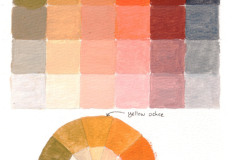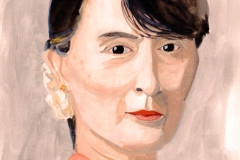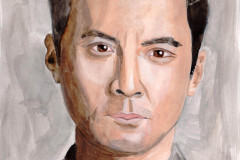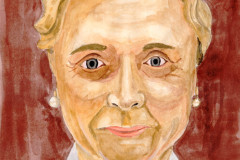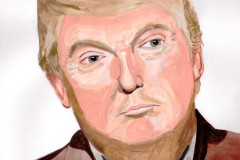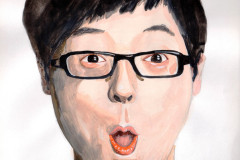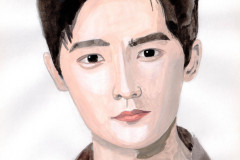Introduction
Gouache paint offers a unique medium for artists who want vibrant, opaque colors combined with the versatility of water-based paints. This guide focuses on helping you understand why a good gouache paint set could become a valuable addition to your mixed media toolkit. You’ll learn practical tips on selecting, using, and mastering gouache paints in your creative projects. Whether you want to create striking illustrations, detailed posters, or rich layered artworks, gouache paint delivers a distinct look that complements your style.
Artists who work with multiple media often seek paints that adapt to different techniques and surfaces. Gouache paint sets, known for their quick drying time and excellent coverage, offer just that. This article explores various aspects of gouache paints tailored to the needs of mixed media artists. By the end, you’ll understand how to integrate gouache seamlessly into your artworks and make informed decisions when purchasing your next paint set.
Understanding Gouache Paint and Its Properties
Gouache paint offers a unique option for mixed media artists. It contains pigments suspended in a water-soluble binder, usually gum arabic, similar to watercolor. The key difference is that gouache includes solid fillers. These fillers give it a thick, opaque quality that watercolor lacks.
Where watercolor is transparent, gouache hides layers beneath. This opacity lets you layer bright colors without muddying your work. Unlike acrylics, gouache reactivates with water, allowing corrections even after it dries.
Its quick drying time helps you work efficiently but also means you need to plan your layering carefully. Gouache paints work well on paper, board, and canvas. You can combine them with pencil, ink, and collage, making them a favorite for mixed media artists.
Think about your workflow: do you need vibrant coverage or subtle wash? Gouache might fit both, giving you control over transparency and solid color in one paint set.
What Makes Gouache Unique
Gouache blends pigments with binders like gum arabic or sometimes dextrin. These binders hold pigment particles together and attach the paint to the surface.
Fillers such as chalk or white clay give gouache its matte and opaque finish. These fillers affect how the paint looks when dry, absorbing light differently than watercolor or acrylic. This results in a smooth, chalky texture with no shine.
The paint’s thickness comes from this mix. It spreads evenly and holds brush strokes clearly. You get sharp edges and flat areas of color. This is a property acrylic users might envy and watercolor artists will find quite different.
Understanding these ingredients helps you predict how gouache behaves on various papers or mixed media surfaces. It also explains why gouache re-wets easily, unlike acrylic.
Gouache Compared to Other Paints
Gouache shares water as a solvent with watercolor but stays opaque, unlike watercolor’s transparent look. Its matte finish differs from acrylic’s glossy or satin sheen.
Watercolor requires building color gradually in washes. Gouache lets you cover mistakes or brighten colors quickly because it does not show underlayers.
Acrylic dries permanently fast. Gouache can reawaken with water, giving you a chance to adjust your work after it dries. However, acrylic paints create a durable, plastic-like surface, while gouache remains flexible but less water-resistant.
If you prefer layering textures or combining paint with pencils and inks, gouache’s rewetting and opacity offer unique freedom. Do you want swift corrections and bold flat colors without permanent drying? Gouache stands in the middle, offering qualities from both watercolor and acrylic.
History of Gouache and Its Artistic Evolution
Gouache paint has a rich history that reaches back thousands of years. Ancient Egyptian artists used pigments mixed with natural binders to create opaque paints for murals and papyrus decorations. These early forms of gouache relied on materials like honey and gum arabic to hold the pigment together.
Persian miniature paintings between the 13th and 17th centuries perfected the use of gouache for detailed, colorful illustrations. These artworks featured vibrant, opaque layers that enhanced storytelling in manuscripts. European artists then adopted gouache in illuminated manuscripts during the Middle Ages, bringing bright, flat colors that survived the test of time.
Over centuries, gouache evolved from natural ingredients to refined, manufactured paints. Today’s gouache preserves its traditional opacity and vibrancy but offers improved consistency and color range to fit mixed media needs.
Ancient and Traditional Uses
Early gouache mixes used sticky binders like honey and gum arabic. This made the paint thick and light-blocking. Many cultures applied these paints on paper and animal skins.
Illuminated manuscripts from medieval Europe showcase gouache’s power to emphasize details and color contrast. Artists layered opaque colors to make images pop against dark backgrounds.
In Persian and Indian miniature traditions, gouache enhanced delicate designs with controlled opacity and flat finishes. These paintings still inspire artists for their fine detail and color clarity.
When you explore these historical uses, think about how those techniques might influence your mixed media textures and layers today.
Modern Advances in Gouache
The arrival of acrylic gouache in the 20th century changed the medium’s possibilities. Acrylic gouache blends water-based acrylic polymer with traditional gouache pigments. This made paint faster-drying and more durable after drying.
Acrylic gouache resists re-wetting once dry, unlike traditional gouache, which artists can reactivate with water. This allows you to layer without disturbing previous paint layers, ideal for controlled mixed media work.
Modern versions also offer better lightfastness and flexibility on various surfaces. You can combine acrylic gouache with markers, inks, or collage with less worry about cracking or peeling.
How might these features influence your approach to layering and materials in your projects? Trying both traditional and acrylic gouache sets gives you more ways to master your art.
Choosing Your Gouache Paint Set
Picking the right gouache paint set shapes your creative work. Start by examining pigment quality. High-quality pigments offer strong opacity and vibrant colors that hold up when layered or mixed. Seek sets with good lightfastness so your art won’t fade over time. Ask yourself: how important is color durability in your projects? Some pigments retain brightness better than others under bright light or display.
Color range impacts your palette flexibility. Consider if the set includes primary colors and useful mixes. Are there earth tones or unique shades to spark creativity? A wider selection helps experiment but might overwhelm beginners. Balance variety with your comfort level and style.
Packaging influences usability and portability. Gouache in tubes provides easier mixing and better moisture retention. Pans suit those who like to travel light or use little paint. Tube sets often come in larger sizes, ideal for studio use. Meanwhile, pan sets can offer compactness for sketchbooks or fieldwork.
Price matters, but value is key. Expensive sets do not always guarantee better results. Some affordable brands produce durable, pigmented gouache suitable for mixed media. Reflect on your budget and how frequently you paint. Would investing in a small, higher quality set or a bigger basic set serve your needs better?
Evaluating Pigment Quality and Color Options
To evaluate pigments, check opacity by painting over dark surfaces. Reliable gouache hides layers beneath with fewer strokes. This matters for layering techniques in mixed media.
Lightfastness ratings show how well colors resist fading. Look for ASTM ratings or manufacturer info. Do you plan to display your work long-term? High lightfastness colors protect your art.
Vibrancy reflects pigment strength and saturation. Compare color swatches before buying. Some artists prefer bold, intense hues; others want softer, muted tones. Does the set’s brightness fit your style?
Test mixes to see how colors blend and maintain richness. Pigment granulation or chalkiness can affect smoothness. Are the colors easy to handle with other media?
Packaging Considerations and Set Sizes
Tube gouache comes in squeezable containers allowing precise color amounts. Tubes prevent paint drying out quickly, especially if sealed tightly after use. They suit artists needing larger volumes or frequent mixing.
Pan gouache is solid and dry, activated by wet brushes. Pans travel well and fit into compact palettes. They can dry out faster during painting sessions but are great for beginners or urban sketchers.
Set sizes range from small starter kits with a limited palette to comprehensive collections covering dozens of shades. Smaller sets simplify learning and reduce waste. Larger sets offer more choices but require storage and investment.
Think about your workspace and painting habits. Do you work mostly in a studio or outdoors? Which packaging supports your workflow without frustration? Would a refillable palette improve efficiency?
Preparing and Using Gouache Paints Effectively
Mixing and Consistency Control
Start by adding a small amount of water to your gouache paint. The right water-to-paint ratio depends on your desired effect. For bold, opaque colors, keep the paint thick with less water. Thin the paint by adding more water for a translucent wash. Experiment on scrap paper to check consistency before applying it to your artwork.
Consistency shapes how the paint behaves on your surface. Thick gouache holds brushstrokes and texture well, ideal for sharp details. Thin layers flow smoothly but may lose vibrancy. If your paint feels too dry, add drops of water one at a time. Avoid overwatering; too much water reduces pigment strength and makes the paint prone to cracking once dry.
Ask yourself: Are you aiming for rich coverage or soft layers? Adjust your mix accordingly to match your vision. Practicing consistency control helps you master how gouache interacts with different surfaces and tools.
Layering and Blending Tips
Apply each gouache layer only after the previous one dries completely. This prevents lifting or mixing of colors unintentionally. Use thin layers to build depth gradually. Thicker applications can trap moisture and cause cracking later on.
Blending works best when you soften the edges between colors while the paint is damp. Use a clean, damp brush to gently feather the boundary. Avoid overblending because gouache dries quickly and can become patchy if reactivated too much. For smooth gradients, apply multiple thin layers, shifting the color step by step.
Try painting wet-into-wet for soft transitions or wait to dry for sharp contrasts. Knowing when to work wet or dry will improve your ability to create texture and dimension. How do your textures change when layering? Explore this by switching brush pressure and stroke direction in each layer.
Best Surfaces for Gouache and Mixed Media Integration
Choosing the Right Surface
The surface you choose affects how gouache paints behave. Watercolor paper is a top pick because it holds water well and withstands multiple paint layers without warping. Cold-pressed paper offers a rough texture, helping paint grip and creating interesting textures. Hot-pressed paper is smooth, allowing fine details with gouache. Canvas is less absorbent but can work if primed properly; it gives a different feel and can add weight to your artwork. Cardboard offers affordability and stiffness but may absorb paint unevenly unless sealed. Your choice depends on the effect you want, and how much layering or blending you plan. Do you need a surface that soaks paint quickly or one that lets you scrub and lift colors? Testing a few options can help you find what suits your style best.
Combining Gouache with Other Media
Gouache pairs well with pencils, inks, watercolor, and acrylics, making it perfect for mixed media. Try starting with pencil sketches to plan your composition, then apply gouache for vibrant colors. Ink lines can add sharp details or textures over dried gouache because the paint forms a matte surface that ink adheres to nicely. When used with watercolor, gouache provides opacity for highlights or corrections. Acrylics can be layered over gouache for durability or mixed for interesting textures. Experiment with order and layering to see what works for your project. Have you tried mixing gouache with ink or acrylic to change the mood of your piece? The combination possibilities let you push boundaries while keeping the fresh look gouache offers.
Tools and Accessories to Complement Your Gouache Set
Your gouache paints perform best with the right tools. Choosing brushes, palettes, palette knives, and cleaning supplies designed for gouache helps you control your colors and textures. Each tool has a role in making your mixed media work smoother and more precise.
Consider brushes that hold water well but keep a sharp point or flat edge for detail or broad strokes. Palettes with plenty of space prevent colors from mixing unintentionally and allow easy blending. Palette knives help you scrape paint or create texture by applying gouache thickly. Cleaning your tools with gentle soap maintains brush shape and preserves bristles for longer use.
Are you using drying trays or wet palettes to keep your paints workable during long sessions? Such accessories can keep your gouache fresh, saving you time. Selecting the right tools reduces frustration and lets you focus on your art. How do your current tools affect your painting flow?
Brush Types and Their Uses
Brushes come in synthetic and natural hair options. Synthetic brushes suit gouache well because they resist absorbing too much paint or water. This helps you keep control and clean strokes. Natural hair brushes like sable offer softness ideal for smooth blends but can cost more and require careful care.
Flat brushes are perfect for covering large surfaces or sharp edges, while round brushes provide precision for details. Filbert brushes combine rounded edges and flat surfaces, offering versatility for shapes and textures. Fan brushes add textured effects and smooth transitions.
Which shapes fit your painting style? Owning a small set with these types covers most gouache techniques. How do you balance between fine detail and bold coverage in your work?
Other Useful Tools for Gouache Artists
A reliable palette is essential. Plastic or ceramic palettes work well because they clean easily and don’t stain gouache. Mixing trays with separate wells help you organize colors and experiment with blends. Portable palettes keep paints ready when you paint outdoors or in tight spaces.
Palette knives help you mix colors evenly without wasting paint. They also allow you to add texture on your surface when painting thick gouache layers. Using soft cloths or sponge brushes cleans brushes between colors without damaging bristles.
Have you tried wet palettes that prevent gouache from drying fast? They slow evaporation and keep paints usable longer, enhancing your workflow. What tools could you add to your setup to improve efficiency and paint quality?
Common Techniques with Gouache Paint
Gouache offers you many ways to express your creativity. Flat washes create smooth, solid areas of color perfect for backgrounds or simple shapes. You simply mix the paint with water until it flows easily and apply it evenly with a flat brush. This technique lets you build bright, uniform fields without visible brush strokes.
Dry brushing adds texture by using a nearly dry brush with just a small amount of paint. When dragged across rough paper, it leaves broken, scratchy marks. This works great for adding detail like grass, hair, or fabric texture.
Glazing is another method where you layer thin, transparent or semi-transparent colors over dry layers. This deepens colors or changes tones without covering the base completely. It can give your painting depth and complexity.
Gouache découpage involves painting shapes separately, cutting them out, and layering them on your main image. This adds a dimensional, collage-like effect. Which of these techniques will fit best with the style you want to develop?
Creating Flat Washes and Opaque Layers
To get flat washes, mix gouache with clean water until you reach a smooth, runny consistency, like thin paint. Use a wide, flat brush and load it evenly. Work quickly before the paint dries, covering the area in one stroke if possible.
Build opacity by applying multiple layers once each dries. Because gouache dries matte and fully opaque, you can block out colors underneath without muddying the paint. This makes it easy to add solid backgrounds or shapes.
If you want a stronger block of color, use less water and more paint. Even thick layers dry fast. Clean your brushes regularly to avoid streaks. Have you tried coloring large backgrounds this way? What challenges did you notice?
Special Effects and Detailing
Use dry brushing for highlights or rough textures. A stiff brush with little paint glides over textured paper, making natural-looking details without covering the surface fully. This technique works well on skies, rocks, or foliage.
Layering thin washes helps build subtle shadows and detailed color shifts. Wait for each layer to dry before adding the next. You can create depth by changing the direction of brush strokes or adjusting paint thickness.
Glaze bright colors over dark areas to make them pop. Try small brushes for fine lines or dots and different stroke patterns to add interest. Are you watching how light falls on your subject to decide where highlights or textures belong?
Troubleshooting and Maintaining Your Gouache Paints
Gouache paints offer rich colors and versatility, but you might face issues like cracking, color shifts, or drying out. Understanding why these problems arise can help you fix and avoid them effectively.
If your gouache paint cracks after drying, this usually happens when the paint layer is too thick or applied unevenly. Thin your paint slightly with water before applying multiple thin layers instead of one thick coat. Using a heavy surface like board instead of absorbent paper can also reduce cracking. Try not to overwork wet areas, as repeated scrubbing can cause cracking.
Color changes are common because gouache dries lighter than it looks when wet. Surfaces and lighting can also affect how colors appear. To keep color integrity, test your mixes on similar paper before committing. Adding a tiny bit of acrylic medium designed for gouache can help keep colors vibrant and stable when dry. Are you noticing unexpected color shifts in your work? Experiment with layering thin washes and adjusting water ratios for better control.
Fixing Color Changes and Cracking
Gouache color often looks different when dry because it reflects less light than wet paint. This shift can frustrate you when the final result seems duller or lighter than planned. Applying thinner layers with less dilution slows down this shift and keeps colors closer to their wet vibrancy. Mixing in a small amount of retarder or flow improver made for gouache can also maintain better flow and color stability.
When cracking occurs, review your painting technique. Avoid painting too thickly, especially in areas prone to cracking. Use proper supports such as heavyweight paper or illustration board to prevent paint flexing and cracking. If cracks appear, you can gently re-wet the area and reapply paint carefully to smooth them out. Have you checked the paint’s consistency and your layering method lately? Adjusting these can fix most cracking issues.
Storage and Paint Preservation
Proper storage extends the life of your gouache paints. Store tubes or pans in a cool, dry place away from direct sunlight. Exposure to heat or sunlight dries out paint faster and can alter pigment quality. Keep caps tightly sealed to prevent air exposure, which causes paint to harden or dry out.
If paint in pans or tubes becomes dry or crumbly, try adding a drop of water and mixing gently to restore softness. Use airtight containers or plastic wrap around pans to trap moisture during breaks in painting sessions. Label your paints with purchase dates to track freshness. Have you ever lost paint quality due to poor storage? Simple habits like these can help maintain your gouache’s performance without frequent replacements.
Inspiring Projects Using Gouache Paint Sets
You can use gouache paint sets in many creative ways that push your art beyond simple painting. Try making bold, colorful illustrations or sharp poster designs that grab attention with gouache’s solid opacity. Its quick-drying nature lets you layer colors without waiting long, which speeds up your workflow.
If you enjoy blending different materials, mix gouache with collage elements. Adding pieces of paper, fabric, or found objects can bring texture and depth to your work. Combine gouache with ink lines or washes to create contrast between smooth and rough surfaces. Experiment with painting over textured papers or canvas to see how gouache adapts to different backgrounds.
Ask yourself: how can you combine gouache’s flexibility with your favorite media? Use it with charcoal or pencil sketches to add vibrant color accents. Try using masking fluid before painting to protect areas and reveal unique shapes. These small projects can help you find new ways to express your ideas and get comfortable with gouache’s effects.
Creating Illustrations and Posters
Gouache works great when you want clear, vivid shapes in your drawings. Its opacity hides underneath colors, so you can cover mistakes or make repeated changes easily. To start, sketch your design lightly in pencil, then paint over it with gouache to build flat color blocks.
Emphasize strong edges and simple shapes to make your illustration pop. Use contrasting colors for impact. Because gouache dries matte, scanning your work afterward will capture the colors without glare. Try layering light colors over dark backgrounds or vice versa to create eye-catching effects.
When making posters, focus on minimal text and bold visuals. Gouache gives your images a crisp look, helping important messages stand out. Creating limited color palettes keeps prints looking unified and professional. What themes or subjects would you choose to bring to life with gouache’s solid coverage?
Mixed Media and Experimental Artworks
Mixing gouache with other art forms lets you craft new textures and ideas. Combine it with collage by painting over glued paper pieces or layering cutouts on dried gouache paintings. The paint’s quick dry time prevents smudging when added over ink details.
Try scratching or scraping into wet gouache to reveal layers beneath. Alternatively, paint on rough surfaces like wood or thick fabric to explore how texture changes the paint’s appearance. Using water-resistant markers or pens with gouache lines can sharpen your compositions.
Challenge yourself to break routine. Blend gouache with unexpected materials such as metallic leaf, charcoal dust, or spray inks. What happens when you apply wet gouache over dried layers of glue or gel medium? Let curiosity guide your process and see where your experiments take your mixed media art.
Where to Buy Quality Gouache Paint Sets and Resources
Top Brands and Retailers
You want gouache paints that deliver consistent color and smooth blending. Traditional brands like Winsor & Newton, Holbein, and M. Graham offer paints trusted by many artists because of their pigment quality and opacity. These brands are widely available in art supply stores like Michaels, Blick Art Materials, and Jerry’s Artarama.
Shopping online opens more possibilities. Amazon and Blick’s websites provide detailed customer reviews and fast shipping options. Local art shops often carry curated selections that let you test colors before buying. Some brands, such as Schmincke and Turner, focus on professional-grade gouache and are also accessible through specialty stores online.
Consider where you feel comfortable exploring your materials. Do you prefer visiting stores to touch and see colors? Or does ordering online suit your pace better? Both routes have options to fit how you shop and learn.
Learning and Support Resources
Developing gouache skills depends on proper guidance and practice. Websites like YouTube host numerous free tutorials covering mixing, layering, and texture techniques. Artists like Will Kemp and Rae Lil Black offer clear lessons that can boost your confidence and capabilities.
Joining online art communities such as DeviantArt, WetCanvas, or Reddit’s gouache groups connects you to feedback, challenges, and shared tips. If you prefer more structured learning, look for workshops and courses on platforms like Skillshare and Domestika, which often include project-based lessons.
Are you the type of artist who learns best with others? Community workshops or local art centers might provide hands-on instruction. Engaging with both digital and in-person resources creates a balanced environment to sharpen your gouache techniques and fuel creativity.
Conclusions
Choosing the right gouache paint set can significantly impact your art projects. Consider your needs carefully: the color selection, paint quality, drying time, and compatibility with different surfaces. Testing samples and reading product reviews help you avoid costly mistakes. You’ll find gouache paints to be a flexible medium that enhances your creative expression through opacity and texture options.
With the knowledge gained here, you can explore gouache confidently in your mixed media work. Experiment with layering, blending, and different application methods to discover how gouache fits into your unique artistic process. Keep refining your techniques, and your artworks will reflect the vibrant qualities that gouache paints offer. How will you use gouache to elevate your creativity next?




















